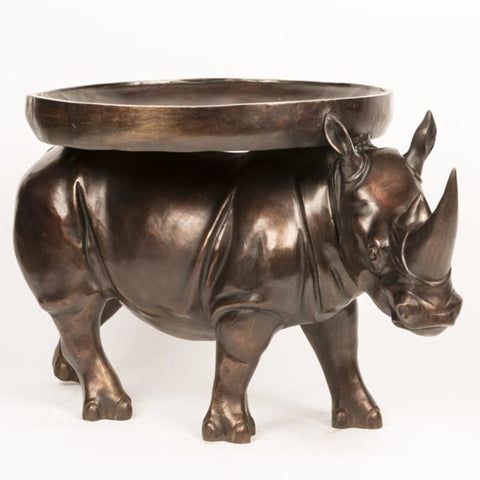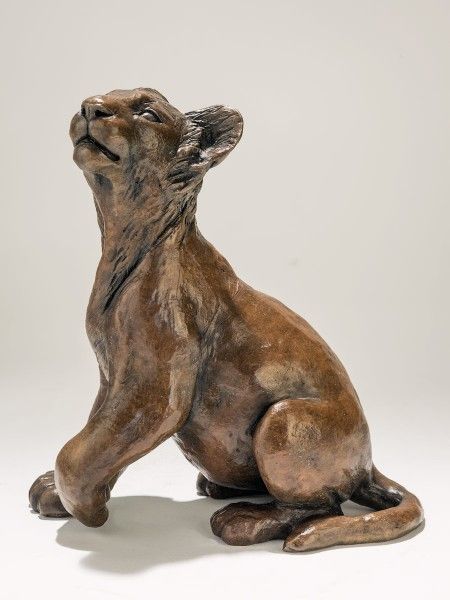The finished wax model is attached to a base and embedded in a ceramic solution called a “shell”. This shell is created by dipping each individual piece into a slurry of silica sand – usually repeated several times to increase its thickness. Once cooled and solidified, this ceramic shell can be further reinforced with more layers, until finally it’s ready to be filled with molten metal, creating the desired finished product.

This process is burning out the wax to where the bronze will pour in. After the workers finish applying the ceramic shell to the wax, the workers burn out the wax. This step involves de-waxing the sculpture and completely eliminating any remnants of wax remaining on the eventual final product. To do so, ceramic shell is built up around the wax until it begins to take on its form and shape. The shell is then placed in a furnace or kiln, which can reach temperatures up to 2,000°F. As it slowly reaches this extreme heat, all of the internal wax melts away and escapes from pin holes left in the ceramic shell. When cooled and cracked open, stunning metal sculptures with incredible detail are revealed.

Metal pouring is an artful ancient Bronze sculpture technique. Workers create a ceramic shell and pour in molten bronze heated to more than 2,000 degrees Fahrenheit. Once cooled and solidified, the ceramic shell is broken open by hammering and chiseling to unleash the bronze creation.
Welding is an essential process to joining the pieces that were just cast in bronze. It’s a very precise and skilled process that requires dedicated attention and refined techniques. Getting the welding right can make all the difference in crafting a beautiful piece of art or artifact. Every welding joint needs to be done perfectly – from ensuring the heat used at each welding location is consistent to making sure there are no signs of stress on the material around the welded area.
Metal chasing is an essential metal working procedure in sculpture making, coming just after welding. It involves intensely grinding down each weld with the help of grinding tools until the metal is perfectly smooth.
Sandblasting is a technique that is often used to remove excess material and smooth the surface of a Bronze sculpture. It involves the use of a high-pressure stream of abrasive particles, such as sand, to etch away at the surface of the bronze. Sandblasting can be used to remove excess material, smooth the surface of the bronze, or create a textured finish on the sculpture.
Patina is the unique and beautiful patina that gives a Bronze sculpture its much-sever after visual appeal. To create patina, an experienced patiner carefully selects and applies chemical substances to the metal. This creates intricate and captivating rust, blue, green, brown, black and yellow colored patinas. This results in individualized pieces of art with an interesting appearance due to nuanced color variations.

